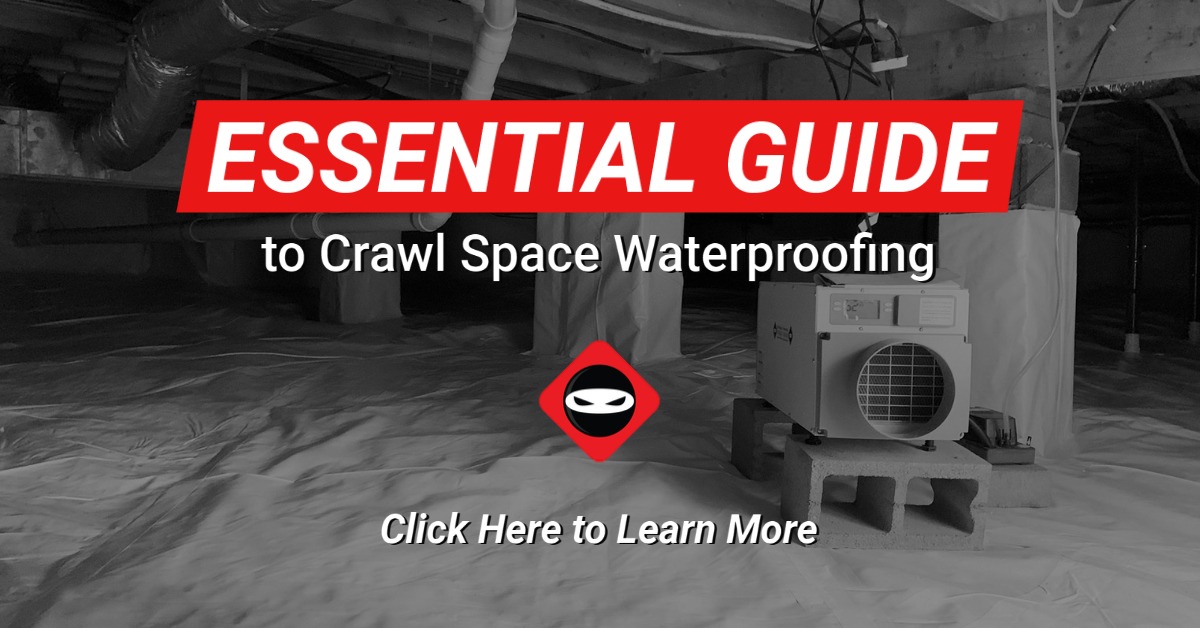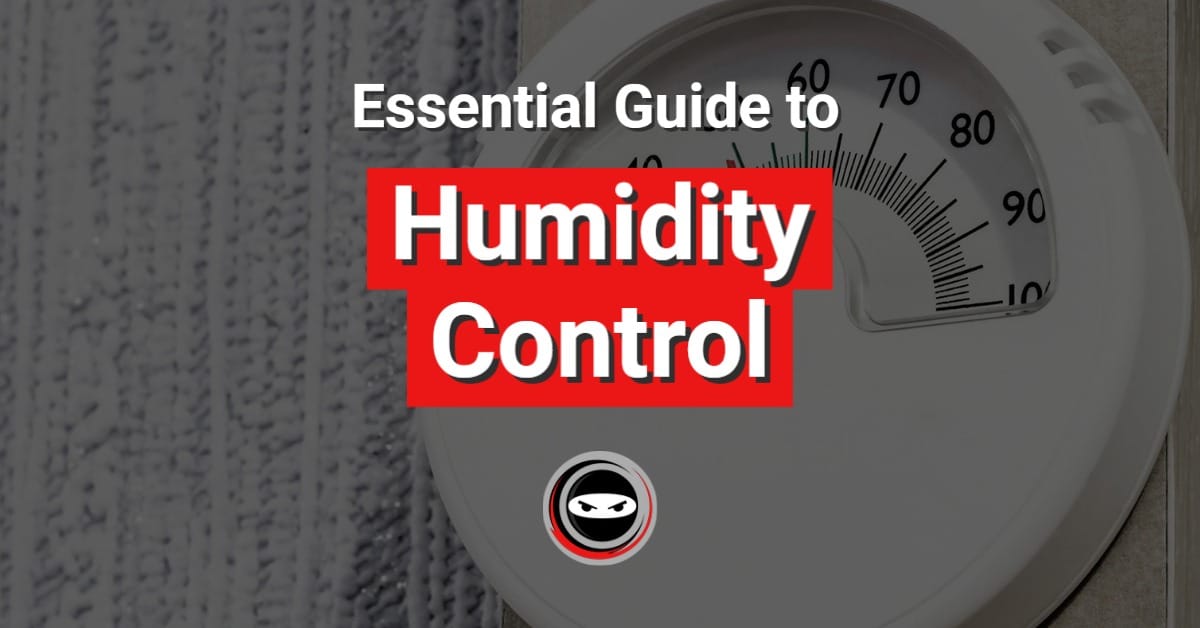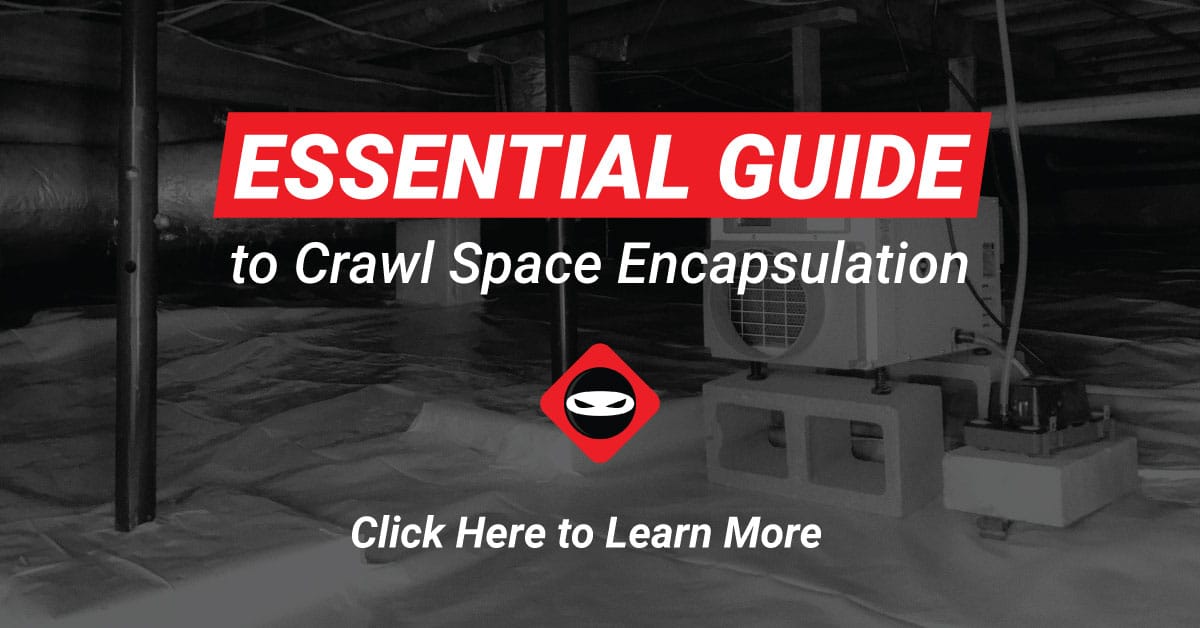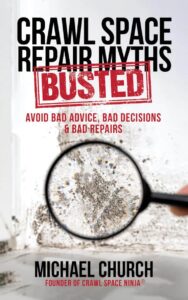The effect of a high water table on your home can be seen in the crawl space, basement, interior walls and doors, and even the roof if you know what to look for. Many homes are affected by the water table at such a subtle pace that it can go unnoticed for years. Sometimes the foundation walls are cracking, tipping, sheering, or bowing before you notice there is a problem.
There is not much that can be done about a high water table. In this article, we will share ways to identify and correct the effects of a high water table on your home.
Flooded Basement, Crawl Space, or Slab Home
If your home was located in a swamp, you’d obviously be fighting high water daily. Plus your home would be constructed in a way to elevate it off the water. Many people’s homes are built on what I call temporary swamps and do not know it. These are areas where the water table is high but just under the surface and therefore unnoticeable.
If your home is located in an area with a high water table, it will likely flood. The water table may only get high a few days of the year but the devastating effects of it flooding is still horrible. Many times we encourage basement and crawl space waterproofing (water management) solutions even if there is no sign of flooding or standing water during our inspection.
Waterproofing a Dry Crawl Space
You may think that is crazy to recommend waterproofing with no signs of standing water. But according to HUD.gov (U.S. Department of Housing and Urban Development), the water table, as it rises, can flood a crawl space any time the dirt floor is lower than the outside dirt. This same principle can be applied to basements as well.
Most basements, slab homes, and crawl space foundations are built with very poor exterior water drainage. This makes it even more likely the home will flood if the water table rises to a high level during a storm. The water will enter at the footer level of the foundation way sooner than it will enter at the dirt level of the exterior. This is why interior waterproofing is recommended even if there is no current flooding. According to HUD.gov, it is a matter of when, not if, the basement or crawl space will flood.
Identifying Water Intrusion with Meters
Using moisture meters to test the amount of moisture in a foundation wall is one of the best ways to identify a moisture problem that could lead to flooding. The meter is designed to measure moisture content in block, concrete, wood, and other building materials. It can help identify which walls are likely to flood in the future.
Use Thermal Imaging for Moisture Problems
You can also use thermal imaging equipment. Just be mindful that thermal imaging can produce a false positive. Thermal imaging works off temperature, not moisture. If the wall is cold it may look like a moisture problem. Since a moisture meter works off moisture only, it is more accurate. Both thermal imaging and moisture meters can be used together to determine potential or active flooding in a basement or crawl space.
Checking Slab Foundations for Moisture Problems
Slab homes may be a little trickier to diagnose. Doing a visual inspection outside is recommended for all foundation types. Thermal imaging, moisture meters, and looking for patio or sidewalk disturbances or other exterior issues can help identify moisture problems.
Check for heaving or sinking concrete around the home’s foundation. Use a moisture meter on baseboards around exterior doors. Look for algae or moss growth in wet areas around the home. This is typically an area with very little sunlight and lots of standing water on the exterior.
Preventing a Flooding Slab Foundation
For slab homes, all the work to prevent or correct flooding must be done on the outside. This can include downspout extensions, french drains, dry wells, or more. Also, ensure retaining walls are draining properly. Sometimes you may need a full drainage system in the yard. This can be done using the Hydraway Drain System installed just under the sod or grass in swampy areas of your yard.
Basement and Crawl Space Flood Prevention
Basement and crawl space waterproofing can be corrected on the inside. But the outside solutions mentioned above may still need to be completed. Interior drain systems or water management systems can be installed in a dirt basement or crawl space. For finished basements, under-slab interior drain solutions can be installed. Typically, all waterproofing systems installed on the interior run to a sump pump. This will ensure all water is pushed out of the basement or crawl space as it enters. Battery backup systems are always recommended on interior sump pump waterproofing systems.
Effect of High Water Table on Your Foundation
Did you know that a high water table can also affect your home’s foundation? Foundation problems usually occur when unstable soils move or shift. The footers may have been poured on good soils 30 years ago, but over time that downspout has dumped thousands of gallons of soil-moving water right near the footer. This erosion has caused the footer to shift, sink, and sometimes even break.
High Water Table and Basement Walls
High water tables add hydrostatic pressure to the foundation walls in basements and crawl spaces. Also, the soil that was backfilled around basements and crawl spaces is not as compact as the original soil. This new soil, called fill, can shift more easily over time. The shifting of soils can cause foundation walls to bow, shear, and tip. Unstable soils can also damage or shift the footer the wall is resting on.
Fixing Foundation Walls
Correcting this problem with foundation walls may be accomplished with carbon fiber straps or I-beams. If a wall is bowing, sometimes stabilization can be achieved without outside excavation. But if the wall needs to be straightened. The soil outside the wall must be removed prior. This is to ensure the foundation wall movement back to normal is not being hindered by outside dirt. Once the wall is straight, the fill is placed back against the wall. Carbon fiber is great for keeping the wall from shifting but should not be used to straighten. Carbon fiber cannot straighten a wall.
Contact Crawl Space Ninja for Basement Waterproofing and Encapsulation
Please contact us to schedule your assessment to fix your crawl space, basement issue.
Do you need help with mold removal, crawl space encapsulation, crawl space insulation, vapor barrier, waterproofing, foundation repair, basement waterproofing, or controlling humidity in your crawl space?
If you live in Georgia, Delaware, North Carolina, South Carolina, Tennessee, or Kentucky, Crawl Space Ninja can help!
Also, let us know in the comments below if you have an idea for a new blog topic.
DIY Crawl Space Repair
Perhaps you’d like to tackle your own crawl space repair. Visit our DIY Store.
Join Crawl Space Ninja as an Owner
Learn about Crawl Space Ninja Franchise opportunities.





Ready to find out more?
Drop us a line today for a quote!
Click Here
Michael Church’s Crawl Space Repair Myths-Busted book was written to help you Avoid Bad Advice, Bad Decisions, & Bad Repairs.
“This book is the Cadillac for crawl space information and Michael Church is your experienced driver. What can I say? It’s just an amazing read.” 5.0 out of 5 stars The real deal.

2 thoughts on “Effect of High Water Table on Your Home”
Question: we live on the coast, we have a crawlspace with ground water occasionally. We decided NOT to encapsulate due to flooding. Rockwool on the ceiling, mason board on the sidewalls. Can we get a ventilator blower pulling humid air OUT? We have 4 open vents
If the make up air entering the crawl space is humid while a fan blows out humid air, the crawl space will still be humid.